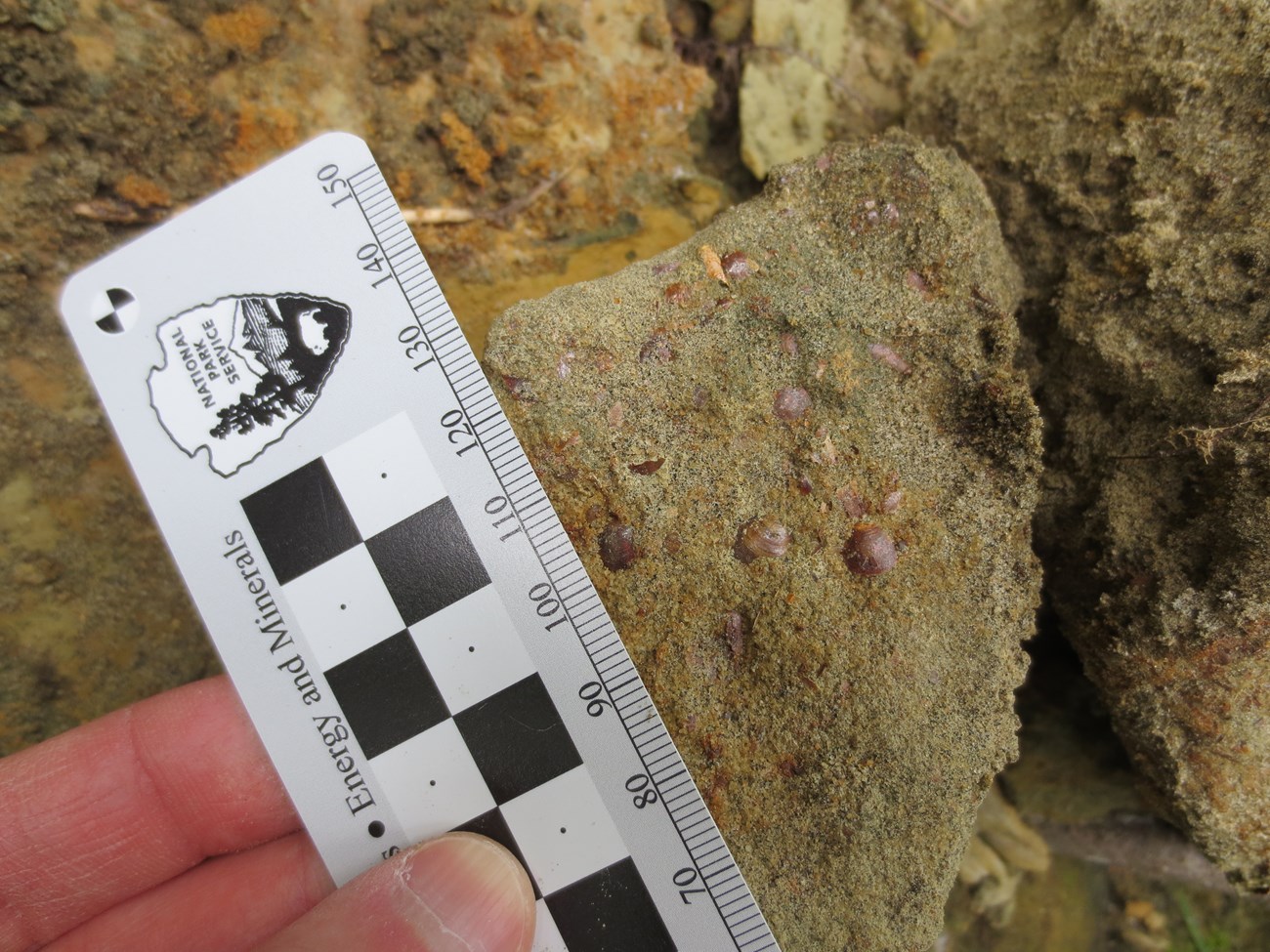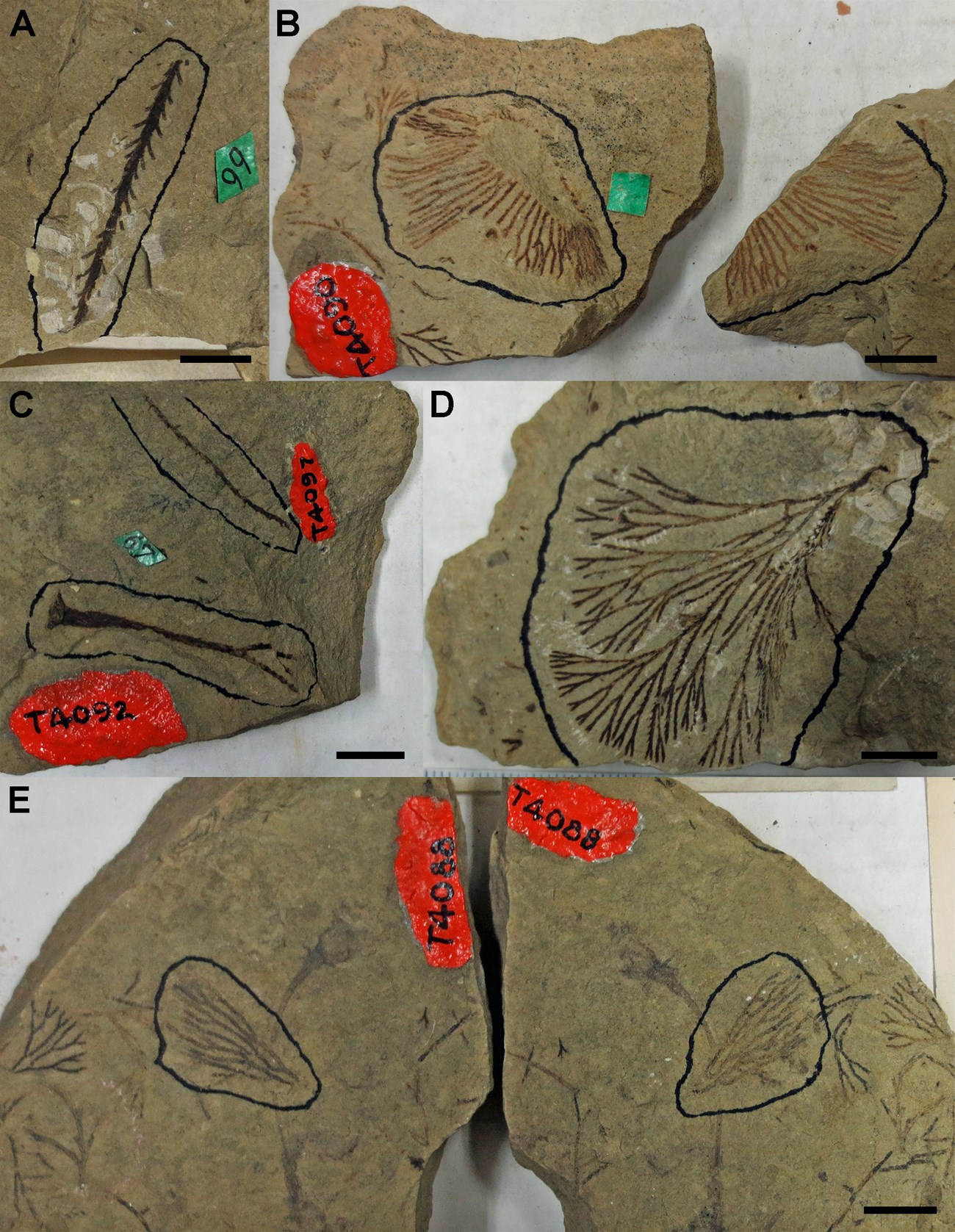Part of a series of articles titled Park Paleontology News - Vol. 10, No. 1, Spring 2018.
Article
Paleontology of St. Croix National Scenic Riverway

for Park Paleontology Newsletter, Spring 2018

Photo taken by Justin Tweet.

Lithologic patterns and symbols for burrows and stromatolites taken from the Federal Geographic Data Committee’s standards. Diagram prepared by Justin Tweet.
The geology of the St. Croix region was first documented by surveying expeditions conducted by David Dale Owen during the late 1840s. They made the first reports of fossils from the St. Croix Valley, and recognized them as perhaps the oldest fossils then known. They were followed by James Hall, one of the founding North American paleontologists. He described a number of trilobite species from the valley. Hall’s assistants and protégés continued to collect and describe fossils from the valley for decades, some for the Wisconsin Geological Survey, other fossils for the U.S. Geological Survey/Smithsonian Institution. Perhaps the most notable among these was Charles Walcott of the USGS and Smithsonian; he is better known for his work in the Burgess Shale, but his interest in the Cambrian led him to amass a significant collection from sites now within SACN. The names used for the formations and fossils became extremely complicated by the middle of the 20th century, and a series of graduate students from the University of Minnesota conducted research projects to disentangle the problems.

Photo taken by Justin Tweet.
The late Cambrian was a sort of “lull” in the history of life. Many of the organisms that had appeared during the Cambrian Explosion had gone extinct, and the next burst of diversification would not take place until the Ordovician. Occasional episodes of low oxygenation of the seas or unusually cold conditions have been suggested as possible causes for the relatively low diversity. The Cambrian fossils of SACN are dominated by brachiopods, snails and snail-like mollusks, trilobites, graptolites, conodonts, and the burrows and trails of unknown worm-like soft-bodied animals.
Brachiopods are shelled filter-feeding marine animals, something like clams, that are still around today. SACN brachiopods are mostly smaller than an inch and often have glossy shells with visible growth bands. The snails and snail-like mollusks that lived alongside them are known mostly from natural molds and casts of their shells, left behind when the original shell material was lost. A site just outside of SACN is famous in geological circles for its fossils of snail-like mollusks and other animals that lived among boulders surrounding an ancient island in the Cambrian sea.

C. Dendrograptus sparsus (UMPC 4097) and colonial stalk and basal disk of D. edwardsi (UMPC 4092). D. Dendrograptus hallianus (UMPC 4094). E. Holotype (UMPC 4088) of Callograptus staufferi (circled) NPS/Justin Tweet

Photo taken by Justin Tweet.
The Cambrian rocks of SACN have long been a source of notable fossils, documenting a past world that was much different than the present. Where today pine forests and towns overlook the St. Croix River on steep rocky bluffs, a shallow tropical sea populated by shelled animals, crawling trilobites, burrowing worms, and branching colonies of graptolites once existed. Although body fossils are often uncommon, trace fossils can be seen in many places in SACN. If you see any, remember to leave them be!
Last updated: April 22, 2020
